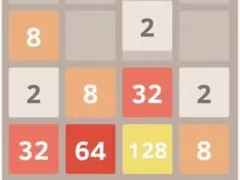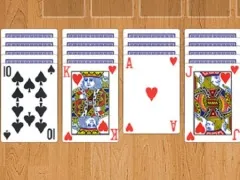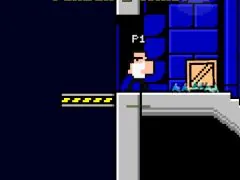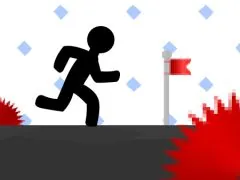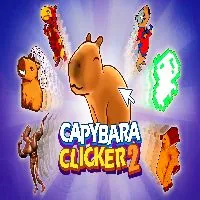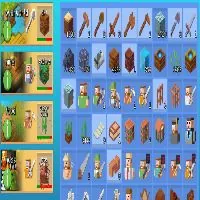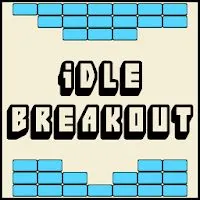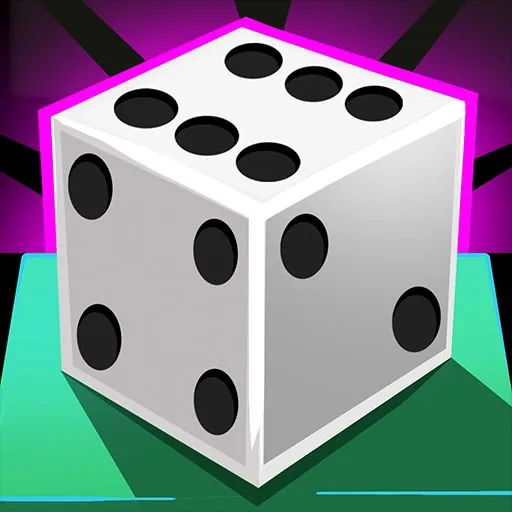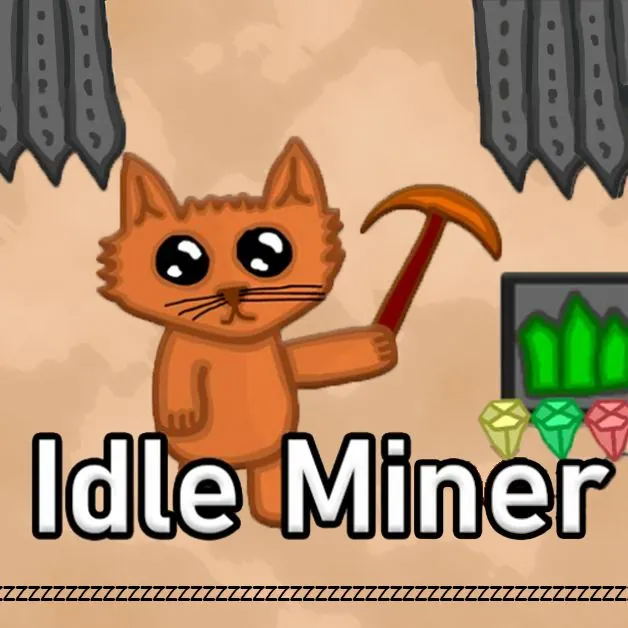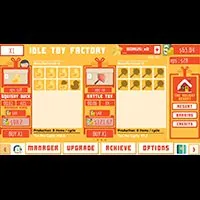HAPPY ROOM
SIMILAR GAMES
Description
Happy Room - Games Unblocked
About Happy Room - Games Unblocked
Welcome to our comprehensive exploration of **Happy Room**, a unique and engaging experience where scientific curiosity meets creative destruction. In this virtual laboratory, players are presented with an unparalleled opportunity to experiment with an array of devastating tools and elaborate contraptions. Our mission is to delve deep into the mechanics, strategies, and sheer entertainment value that **Happy Room** offers, providing you with the insights needed to master its challenges and unlock its full potential. We believe in offering a detailed understanding of what makes this game so compelling, from its core gameplay loop to the innovative ways players can approach its increasingly complex objectives.
Unveiling the Core Gameplay of Happy Room
At its heart, **Happy Room** is a physics-based puzzle game that places you in the role of a mad scientist tasked with a rather peculiar job: testing the limits of durability on a series of expendable test subjects, known as clones. The game doesn't shy away from its dark humor, offering a sandbox environment where experimentation is not only encouraged but essential for progression. We are given access to a vast arsenal of weapons, traps, and environmental hazards. These range from the seemingly simple, such as sharp spikes and spinning blades, to the more exotic and devastating, like lasers, flamethrowers, **explosives**, and even miniature **black holes**. The primary objective is to strategically arrange these devices to inflict maximum damage upon the clones, thereby fulfilling the specific goals set for each level. These goals can vary greatly, pushing players to think creatively about trap placement, timing, and the synergistic effects of combining different tools.
The Virtual Laboratory: A Playground of Destruction
The setting for **Happy Room** is a sterile, yet highly functional, virtual laboratory. This environment is crucial to the game's design, providing a clean slate upon which players can construct their elaborate death traps. The laboratory is equipped with an intuitive interface that allows for easy selection and placement of various contraptions. We can drag and drop an assortment of items into the play area, positioning them precisely to create complex chains of events. The clones themselves are presented in a static state initially, waiting to be subjected to our scientific endeavors. The interaction between the placed traps and the unsuspecting clones is governed by a robust physics engine, ensuring that each action has a realistic (within the game's context) consequence. This attention to detail in simulating physical interactions is what elevates **Happy Room** beyond a simple point-and-click game, turning it into a true test of ingenuity and planning.
Mastering the Arsenal: Weapons and Traps Explained
The true depth of **Happy Room** lies in its extensive and diverse collection of tools. We can spend hours experimenting with the unique properties of each item. For instance, **spinning saws** can be used to dismember clones, while strategically placed **flame jets** can incinerate them. **Laser beams** can be angled to cause continuous damage, and **acid pools** offer a corrosive threat. More advanced levels introduce truly mind-bending devices. We can utilize **gravity manipulators** to crush clones against the ceiling or floor, or deploy **energy spheres** that pulse with destructive power. The introduction of **black holes** adds a layer of spatial manipulation, capable of pulling multiple clones into a single point of destruction. Each weapon and trap has its own activation mechanism, damage radius, and potential for chain reactions. Understanding these nuances is key to efficiently completing objectives.
Strategic Planning: The Key to Success
Success in **Happy Room** is not about brute force or random placement; it's about meticulous planning and strategic execution. We are often given specific objectives that require a particular type of damage or a certain number of clones to be eliminated in a specific way. This necessitates careful consideration of the level layout, the available tools, and the clones' initial positions. For example, a goal might require us to inflict a certain amount of blunt force trauma. In such a scenario, we might opt for heavy crushing devices or strategically placed explosions. If the objective is to dismember a specific number of clones, we would focus on sharp, cutting traps. The game encourages a trial-and-error approach, but with intelligent planning, players can significantly reduce the number of attempts needed. We can set up initial configurations, observe their effects, and then refine our strategy based on the results. This iterative process of design, testing, and refinement is a core aspect of the **Happy Room** experience.
Level Design and Increasing Complexity
As players progress through **Happy Room**, the challenges become increasingly intricate. Early levels might introduce a few basic traps and a handful of clones, allowing players to get a feel for the mechanics. However, subsequent levels introduce more complex layouts, a greater number of clones, and more stringent objectives. Some levels might require us to eliminate clones using only specific types of traps, while others might task us with achieving a certain damage threshold within a tight time limit after activation. The placement of obstacles and platforms within the laboratory also plays a significant role, forcing players to think about ricochets, trajectories, and how to funnel clones into kill zones. The game consistently introduces new elements and challenges, ensuring that players remain engaged and constantly learning new ways to utilize the available tools. We find that mastering the synergy between different traps becomes increasingly important, as combining a laser with a set of spinning blades can yield far more devastating results than using either alone.
The Sandbox Element: Unleashing Creativity
Beyond the structured levels, **Happy Room** also offers a true sandbox experience. Players can experiment freely within the laboratory, combining any traps they wish without the pressure of specific objectives. This aspect of the game is invaluable for understanding the full potential of the arsenal and discovering emergent gameplay possibilities. We can create elaborate Rube Goldberg-esque contraptions designed purely for the spectacle of their destructive chain reactions. This freedom allows for immense creativity and can lead to surprising and often hilarious outcomes. The sheer variety of items available means that players can spend hours simply exploring different combinations and seeing what happens. This sandbox element truly underscores the game's premise of scientific experimentation, albeit in a highly entertaining and unconventional manner.
Understanding the Clones: Limitations and Opportunities
The test subjects, or clones, in **Happy Room** are intentionally designed to be passive until triggered. They do not react intelligently to their environment or attempt to evade danger. This passive nature is a crucial design choice, as it allows players to focus entirely on the mechanics of the traps and their strategic placement. However, the clones are not entirely without their characteristics. They possess a certain mass and fall under the influence of gravity, allowing them to interact with moving traps and environmental hazards. Some traps might require the clones to be in a specific position or state of motion to be effective. For instance, a powerful explosion might be less effective if the clone is not directly in its blast radius, or if it's too far away to be impacted by the subsequent shockwave. Understanding these subtle physical properties of the clones is an often overlooked but important aspect of effective trap design.
Visuals and Sound Design: Enhancing the Experience
While **Happy Room** is primarily a puzzle game, its presentation contributes significantly to its overall appeal. The visual style is clean and functional, befitting a laboratory environment. The graphics are sharp, allowing for clear visibility of the traps, clones, and their interactions. The animations, particularly the gruesome (yet stylized) results of the traps, are well-executed and provide satisfying feedback to the player's actions. The sound design complements the visuals effectively. The whirring of saws, the crackle of lasers, the booms of explosions, and the screams of the clones (though repetitive, they add to the dark humor) all contribute to an immersive experience. The subtle background music creates an atmosphere of scientific endeavor, punctuated by the cacophony of destruction. This combination of visual and auditory elements makes the act of experimenting with traps and observing their effects all the more engaging.
The Fun of Experimentation and Learning
One of the most rewarding aspects of **Happy Room** is the intrinsic joy derived from experimentation and discovery. The game fosters a sense of intellectual curiosity, encouraging players to ask "what if?" and then providing the tools to find the answer. Each level presents a problem, and the entire arsenal is at our disposal to devise a solution. When a complex trap sequence works perfectly, resulting in the successful completion of a difficult objective, there is a genuine sense of accomplishment. The learning curve is steep but fair, and every failed attempt provides valuable information that can be used to refine the next strategy. We find that players who embrace the experimental nature of **Happy Room** are the ones who derive the most enjoyment from it, constantly pushing the boundaries of what's possible within the game's framework.
Accessibility and Enjoyment for All Players
We believe that **Happy Room** offers an accessible yet deeply engaging experience for a wide range of players. The controls are straightforward, relying primarily on mouse clicks and drags, making it easy to pick up and play. The escalating difficulty ensures that both new and experienced players can find a suitable challenge. The game's unique premise and dark humor also contribute to its broad appeal, offering a refreshing alternative to more conventional game genres. Whether you are a puzzle enthusiast looking for a mental workout, a player who enjoys creative sandbox experiences, or simply someone looking for a unique and entertaining way to spend your time, **Happy Room** has something to offer. We are committed to ensuring that our platform provides seamless access to these kinds of enriching gaming experiences.
The Appeal of Unblocked Gaming Environments
We understand the importance of having access to enjoyable and engaging games, especially in environments where standard gaming might be restricted. **Happy Room** is a prime example of a game that offers deep engagement and strategic thinking, making it a perfect fit for those seeking entertainment and a mental challenge during downtime. Its premise of scientific experimentation and creative problem-solving provides a fulfilling experience without requiring complex controls or demanding reflexes. The satisfaction comes from clever planning and execution, which can be enjoyed at one's own pace. This makes games like **Happy Room** exceptionally valuable for individuals looking to make the most of their available time and resources, offering a rich and rewarding virtual playground.
Exploring Advanced Strategies and Combinations
As players become more familiar with the vast array of tools in **Happy Room**, they begin to explore more advanced strategies. This involves understanding the subtle interplay between different types of damage. For example, applying a burning effect to a clone before triggering an explosion can sometimes amplify the total damage dealt. Similarly, using a gravity trap to hold clones in place can make them more vulnerable to a barrage of lasers. We discover that the most effective solutions often involve a carefully orchestrated sequence of events, where each trap plays a specific role in leading to the final outcome. This might involve using a teleporter to move a clone into a kill zone, followed by a series of timed explosives, and finally finishing them off with a persistent acid pool. The possibilities for intricate trap design are virtually endless, encouraging players to constantly innovate and discover new synergies.
The Role of Physics in Happy Room's Design
The underlying physics engine is a cornerstone of **Happy Room**. It dictates how objects interact, how clones react to forces, and how environmental hazards propagate. This realistic (within the game's context) simulation is what makes the trap placements so impactful. A falling object will gain momentum, a projectile will follow a trajectory, and explosions will create shockwaves that can affect nearby elements. We can leverage this physics system to our advantage by setting up chain reactions. For instance, an explosion could knock a clone into a spinning blade, which then sends it flying into a laser grid. Understanding how gravity affects the clones, how different surfaces react to impacts, and how forces are distributed is crucial for creating efficient and devastating trap setups. This deep integration of physics makes the game feel dynamic and responsive to our actions.
Replayability and Objective Variety
The inherent design of **Happy Room** promotes significant replayability. The diverse set of levels, each with its unique layout and objectives, ensures that players always have new challenges to tackle. Furthermore, the sandbox nature of the game allows for endless creative exploration, even after completing all the main objectives. Players can return to previous levels and attempt to find more efficient or spectacular ways to eliminate the clones, perhaps aiming for higher scores or simply for the joy of experimentation. The variety in objectives—whether it's causing a specific type of damage, eliminating a certain number of clones within a timeframe, or surviving a wave of hazards—keeps the gameplay fresh and engaging. This constant stream of new problems to solve and creative avenues to explore is what makes **Happy Room** a long-lasting and enjoyable experience.
Conclusion: A Masterclass in Creative Destruction
In summary, **Happy Room** stands out as a remarkably well-designed game that successfully blends puzzle solving, strategic planning, and creative sandbox gameplay. We have explored its core mechanics, the vast arsenal of destructive tools, the intricate level design, and the satisfying interplay of physics and strategy. The game offers a unique and darkly humorous experience, providing players with the ultimate virtual laboratory to test the limits of their ingenuity. Whether you are aiming to meticulously fulfill challenging objectives or simply unleash your creativity in a chaotic sandbox, **Happy Room** delivers an immensely rewarding experience. We are confident that by delving into these aspects, players can truly master the art of scientific destruction and unlock the full potential of this captivating game.
Happy Room sets you in a virtual laboratory where you are tasked with testing out various weapons and traps on clone test subjects. The game provides a sandbox environment filled with all manner of dangerous and bizarre contraptions. From lasers and saws to explosives and black holes, you arrange these devices strategically to create the most effective sequence to damage the clones. The objective is to fulfill the challenging goals set for each level, which often require you to experiment with the placement and combination of traps.
Strategy and Destruction
Each level in Happy Room offers a different set of objectives and budgets, pushing you to think creatively to maximize your damage output within the constraints. You’ll unlock more destructive devices as you progress, allowing for even more elaborate and chaotic setups. The game encourages you to revisit levels with your newly acquired arsenal to achieve better efficiency and higher scores. The physics-based reactions of the traps and clones add a layer of unpredictability, making each session uniquely destructive. Engage in this macabre yet oddly satisfying scientific endeavor to discover just how damaging your contraptions can be.
